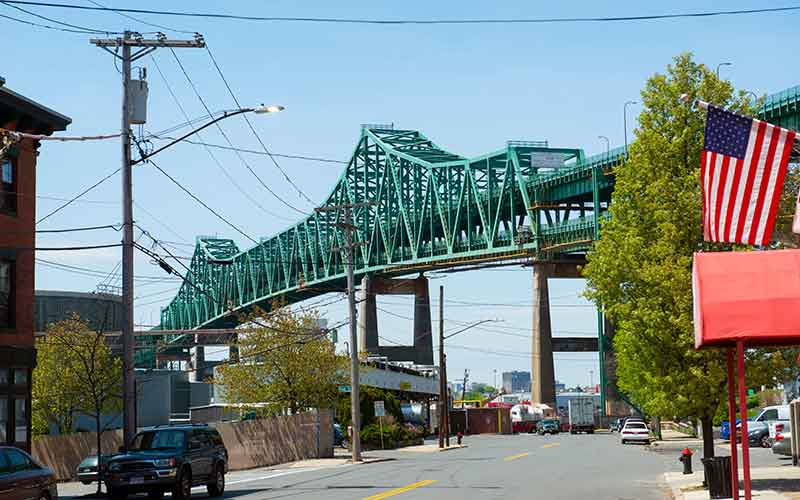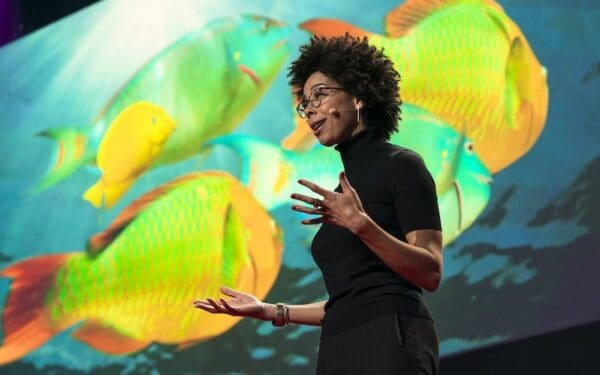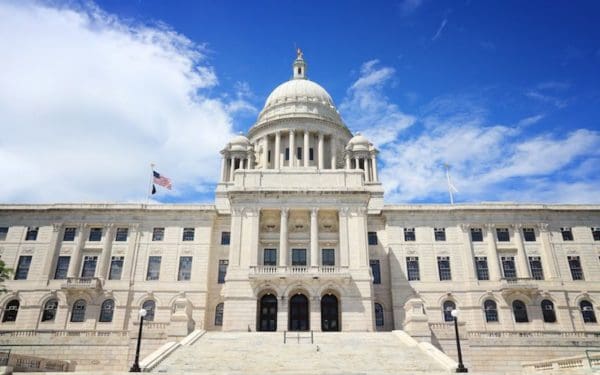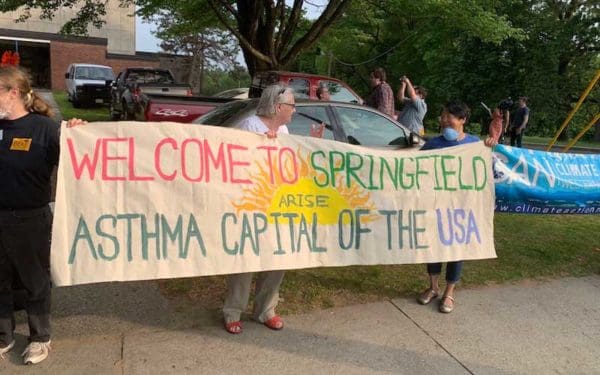
Chelsea is an environmental justice community just across the Mystic River from Boston. Photo: Shutterstock.
UPDATE: By unanimous vote, environmental justice language – which gives residents of historically disadvantaged neighborhoods more say in what happens in their own backyards – from one of our key bills has moved forward. This language has now been incorporated into the House Roadmap bill, which is being combined with the Senate Climate bill – a big win for both environmental justice and climate action. These critical climate bills are designed to help Massachusetts lower its polluting emissions by adding timelines and milestones to our existing Global Warming Solutions Act. With this new language, the climate bills will ensure that neighborhoods disproportionately impacted by pollution and other environmental harms are not left behind as we transition to a clean energy economy.
We must now pass these climate bills and codify this justice language into law. Contact your local legislators and urge them to support the Massachusetts Roadmap bill with this environmental justice language included.
For decades, low income, immigrant, and communities of color across the Commonwealth have disproportionately born the burdens of air pollution from power plants, congested freeways, and industrial activity. We’ve now seen COVID-19 and the associated economic crisis devastate these same communities.
Discriminatory housing, zoning, and transportation policies have disenfranchised the residents of these communities, denying them the power to shape their own neighborhoods. This has a direct impact on resident health and well-being, stretching over generations.
However, residents are mobilizing for action — demanding common-sense protections for their communities. I connected with two of these resident partners – María Belén Power from GreenRoots, Andrea Nyamekye of Neighbor to Neighbor – as well as my CLF colleague Staci Rubin to talk about what needs to change. The four of us spoke about what having strong environmental justice protections mean for our communities.
Below is an excerpt from our conversation, edited for clarity.
What are environmental justice protections?
Staci Rubin, CLF: Environmental justice protections are the recognition and protection of people of color, low-income residents, and people with limited English language proficiency. It means they are able to live in their communities, with all the same environmental benefits, and have the ability to influence decisions that are impacting how they live their lives and what happens in their [own] communities.
Andrea Nyamekye, Neighbor to Neighbor: Environmental justice means having the ability for folks to make decisions and be a part of decision-making processes that have to do with their immediate environment, their health, etc.
It gives [people] the ability to express self-determination and influence how they want their environment to look. Without [environmental justice], a lot of communities are consistently being pushed out of those decision-making processes – either because there’s a new facility [like a power plant] and nothing is translated in the language that they speak, or meetings are during the day when a lot of people are at work.
The really important part is ensuring that people can actually make decisions, and have decision making power, in their communities.
What does life look like without these protections?
Staci Rubin, CLF: Life without environmental justice protections looks like fossil fuel power plants in these communities. It looks like highways with single occupancy vehicles running through and dividing neighborhoods. It looks like people living under flight paths. It’s loud and difficult to breathe. It’s people not having access to green space to walk and bike and enjoy with families and friends. And it looks like a place where people are literally sick and dying at higher rates because they are exposed to these cumulative burdens of environmental harm and energy [pollution].
María Belén Power, GreenRoots: I would add a couple things, just highlighting what Andrea said about self-determination and how decisions are made. I think specifically about the Eversource substation and how that was approved in a process that was not in the language of the community where the project is being sited. The meetings [for the project] never happened in that community until Eversource was forced to [hold them there].
What is the goal of environmental justice protections?
María Belén Power, GreenRoots: When I think about self-determination, what comes to mind is the community actually being at the table. And just having basic rights, such as understanding what is being said, what is being approved. And I would say in a larger picture, it also the reversal of generations of environmental racism.
In some ways, [environmental justice] is doing the hard work of fixing the structures that have for so long been oppressive and racist and anti-low-income folks and anti-immigrant and anti-non-English speakers.
What we can, and should, do now.
All communities have the right to self-determination and a healthy environment. A set of critical environmental justice bills at the Massachusetts legislature will help them get it. If passed, these bills would provide residents a stronger voice in the projects impacting their neighborhoods. They would also require government agencies to take a much harder look at how and where dangerous facilities are placed.
These bills are one step in overcoming a history of racist policies, protecting communities from further pollution, and increasing access to resources like public transit, gardens, and playgrounds.
Advocates recently submitted two letters – signed by dozens of organizations and environmental justice, civil rights, and constitutional law experts – that highlight the importance and urgency of this legislation. You can also help support these bills by contacting your elected officials in support of H.4264, S.464, and S.453.
Call or email House and Senate leadership, as well as the House and Senate Ways and Means Chairs, and tell them you support these bills.
This blog is one in a series about environmental justice in Massachusetts, and the critical work being done in the legislature to address it. It was originally published on June 29, 2020. Read the entire series here.
María Belén Power is the Associate Executive Director of GreenRoots, a community-based and resident-led environmental justice organization working in Chelsea and East Boston, Massachusetts.
Andrea Nyamekye is the Campaign and Policy Director at Neighbor to Neighbor, a Massachusetts-based grassroots power-building organization working to improve quality of life for local communities.
Staci Rubin is a Senior Attorney at CLF focusing on transportation advocacy and its intersection with public health and the climate crisis.



